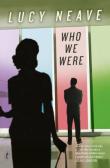AustLit
Latest Issues
AbstractHistoryArchive Description
'Melbourne, 1938. Annabel's dream is to be a scientist. Falling in love is not part of her plan. But when she meets Bill Whitten she knows instantly that they are destined for each other.
'She has to wait for him to come back from the war. Their life together, as lovers and microbiologists, can now begin.
'The newlyweds emigrate to New York. They are at once captivated by fellow immigrants Frank, an ex-Communist from Hungary, and his playwright wife, Suzy. It's the 1950s and the Cold War is in full swing. Frank, Annabel and Bill find work on weapons projects, experimenting with lethal infectious diseases.
'Did they cross the world for this? Annabel's whole being is anchored in her ardour for Bill, and their work together. But other forces—suspicion, paranoia, deceit—are at play. Everything begins to unravel: her work, her career and her marriage.
'With its backdrop of science and politics Who We Were is a love story to be reckoned with, an intimate and powerful first novel about trust, obsession and the truth itself.' (Publisher's blurb)
Publication Details of Only Known VersionEarliest 2 Known Versions of
Works about this Work
-
Book Review – Who We Were by Lucy Neave
2014
single work
review
— Appears in: Booklover Book Reviews 2014;
— Review of Who We Were 2013 single work novel -
Being Read : How Writers of Fiction Manuscripts Experience and Respond to Criticism
2014
single work
criticism
— Appears in: TEXT : Journal of Writing and Writing Courses , April vol. 18 no. 1 2014;'This paper brings into dialogue contemporary discourse in creative writing studies about approaches to reading draft fiction with a subjective account of the experience of being read. Through drawing on two key essays on reading strategies in the discipline of creative writing, statements by published authors and my own process, this paper looks at how writers respond to feedback on their writing. Reading of draft creative work occurs in overlapping contexts – in universities, by informal networks of writers and by editors – and social structures such as reading and writing groups support a writer in his or her response to criticism. The changes made to manuscripts as a result of feedback can be significant; this paper looks at the contexts in which such changes are executed. Ultimately, this paper argues that ‘communities of practice’ composed of writers who attended a university creative writing program together and who continued to read each other’s work after graduation utilised and developed strategies initiated in such programs. Such communities have benefits for their members in terms of social support and publication.' (Publication summary)
-
Review : Lucy Neave, Who We Were
2013
single work
review
— Appears in: Long Paddock , vol. 73 no. 3 2013;
— Review of Who We Were 2013 single work novel -
Sounds of Silence
2013
single work
review
— Appears in: The Canberra Times , 24 August 2013; (p. 5)
— Review of Who We Were 2013 single work novel -
The Right Place at the Write Time
2013
single work
review
— Appears in: The Canberra Times , 20 July 2013; (p. 9)
— Review of Who We Were 2013 single work novel 'Writer Lucy Neave learnt a lot through working for one of the literary greats, Sally Pryor writes.'
-
Well Read
2013
single work
review
— Appears in: The Advertiser , 25 May 2013; (p. 28)
— Review of Elemental 2013 single work novel ; Who We Were 2013 single work novel -
Dubious Activities
2013
single work
review
— Appears in: Australian Book Review , June no. 352 2013;
— Review of Who We Were 2013 single work novel -
New Australian Fiction
2013
single work
review
— Appears in: The Weekend Australian , 20-21 July 2013; (p. 25)
— Review of Heist 2013 single work novel ; Who We Were 2013 single work novel ; A Wrong Turn at the Office of Unmade Lists 2013 single work novel ; Fin Rising 2013 single work novel -
The Right Place at the Write Time
2013
single work
review
— Appears in: The Canberra Times , 20 July 2013; (p. 9)
— Review of Who We Were 2013 single work novel 'Writer Lucy Neave learnt a lot through working for one of the literary greats, Sally Pryor writes.' -
Sounds of Silence
2013
single work
review
— Appears in: The Canberra Times , 24 August 2013; (p. 5)
— Review of Who We Were 2013 single work novel -
Being Read : How Writers of Fiction Manuscripts Experience and Respond to Criticism
2014
single work
criticism
— Appears in: TEXT : Journal of Writing and Writing Courses , April vol. 18 no. 1 2014;'This paper brings into dialogue contemporary discourse in creative writing studies about approaches to reading draft fiction with a subjective account of the experience of being read. Through drawing on two key essays on reading strategies in the discipline of creative writing, statements by published authors and my own process, this paper looks at how writers respond to feedback on their writing. Reading of draft creative work occurs in overlapping contexts – in universities, by informal networks of writers and by editors – and social structures such as reading and writing groups support a writer in his or her response to criticism. The changes made to manuscripts as a result of feedback can be significant; this paper looks at the contexts in which such changes are executed. Ultimately, this paper argues that ‘communities of practice’ composed of writers who attended a university creative writing program together and who continued to read each other’s work after graduation utilised and developed strategies initiated in such programs. Such communities have benefits for their members in terms of social support and publication.' (Publication summary)
Awards
- 2014 shortlisted Australian Capital Territory Book of the Year Award
-
New York (City),
New York (State),
cUnited States of America (USA),cAmericas,
- 1950s




